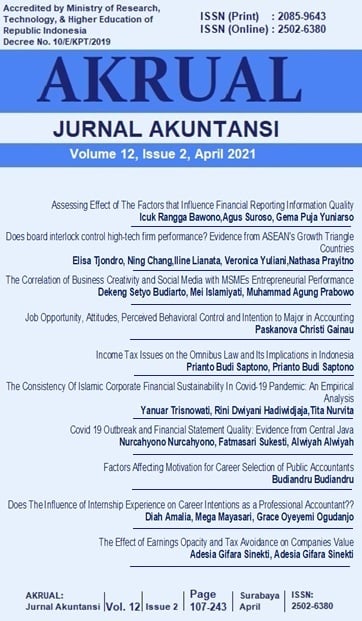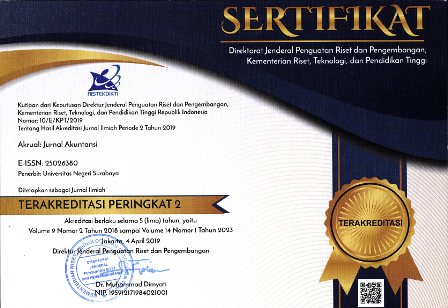Does Board Interlock Control High-Tech Firm Performance? Evidence from ASEAN's Growth Triangle Countries
DOI:
https://doi.org/10.26740/jaj.v12n2.p117-131Keywords:
ASEAN countries, Firm performance, High-tech firm, Woman interlock, Board interlock, Independent interlockAbstract
The aim of this study is to explain the board interlock association on high-tech firm performance in three growth ASEAN countries. The research samples were 109 high-tech listed manufacturing firms, consisting of 38 Indonesian firms, 37 Malaysian firms, and 34 Thai firms in the 2015-2018 period. The study used panel regression analysis. The research found that corporate governance through interlock directorates is a determinant of high-tech firm performance. The low human capital with high-tech capabilities in ASEAN countries can be overcome by interlocking and facilitating companies to access strategic information. This study also found a positive association between director woman interlock and corporate performance. On the other hand, an independent director who does interlocking actually has a negative effect on company performance. This research is the first research on board interlock in high-tech firms in ASEAN growth countries, Indonesia, Malaysia, and Thailand. There is still limited research involving more than one country, especially developing countries, in studying the interlock board relationship on the company performance. The highlight of this study is to compare the effects of the three interlocks, interlocking directorate, woman interlock, and independent interlock, and their associations on the profitability of high-tech firms. Investors can have an in-depth understanding of the role of the type of interlock that affects the profitability and make the right decision in investing.
References
Pfeffer, J., & Salancik, G. R. (1979). The External Control of Organizations. A Resource Dependence Perspective. The Economic Journal, 89(356), 969. https://doi.org/10.2307/2231527
Sanan, N. K., Jaisinghani, D., & Yadav, S. (2019). Corporate governance, firm performance, and business group affiliation: evidence from India. Management Decision. https://doi.org/10.1108/MD-03-2019-0376
Wooldridge, J. M. (2013). Introductory econometrics a modern approach 5th edition(5th ed.). Mason: South-Western. https://doi.org/10.4324/9781351140768-8
Downloads
Published
How to Cite
Issue
Section
License
Copyright (c) 2021 AKRUAL: Jurnal Akuntansi

This work is licensed under a Creative Commons Attribution-NonCommercial 4.0 International License.
 Abstract views: 814
,
Abstract views: 814
, PDF Downloads: 647
PDF Downloads: 647


















